#china ogre
Explore tagged Tumblr posts
Text

China's otherworldly mountains that inspired Avatar
Zhangjiajie, China's first national park, also features glass-bottomed bridges, a mountain elevator and a food court complete with a McDonald's for those inclined to take it easy.
Shy was not an impatient person, but even she struggled to keep her cool when I whipped out my phone to take what must have been the 100th photo of the same view. Shy – short for Shen Hong Yan – was my guide through Zhangjiajie National Forest Park in central China, and she knew there were better viewpoints up ahead. But I couldn't bring myself to move on just yet; the soaring sandstone quartz pillars of this forest were unlike anything I had seen anywhere else in the world.
Located in the north-western corner of Hunan province, Zhangjiajie is China's first national park, established in 1982. This forest is part of the larger Wulingyuan Scenic Area that was included in Unesco's list of World Heritage sites in 1992 and later given Global Geopark status in 2001. The name may be a tongue-twister, but there is an easier way to remember it – as the inspiration for the Hallelujah Mountains that featured in the blockbuster movie Avatar. In fact, before I visited Zhangjiajie, that was the only fact I knew about this place. Shy confirmed what I had suspected: that Zhangjiajie used to be an underexplored destination even among Chinese tourists before the movie catapulted it into their consciousness Read more
#china's otherworldly#otherworldly places in china#is china on the other side of the world#does china have a separate internet#opposite side of the world from china#china other information#china in other languages#china's relationship with other countries#china's way of life#other china#a chinese odyssey love of eternity#a chinese odyssey love of eternity (2017)#a chinese odyssey#a chinese odyssey theme song#a chinese odyssey only you#the other china#china other languages#daveeyg does chinese#e's otherwise characters#e china cities#e china#other chinese flags#fate china#forgotten ally china's world war ii#another chinese#china ogre#g china made in japan#h china#hetalia china and japan fanfiction#hetalia china sub
0 notes
Text


I wanna print this and make it into a poster...
#baki hanma#baki son of ogre#baki the grappler#hanayama kaoru#jack hanma#katsumi orochi#kiyosumi katou#yujiro hanma#baki dou#baki headcanons#baki art#baki sikorsky#sikorsky baki#digital art#communist china#illustration#kureha shinogi
16 notes
·
View notes
Text
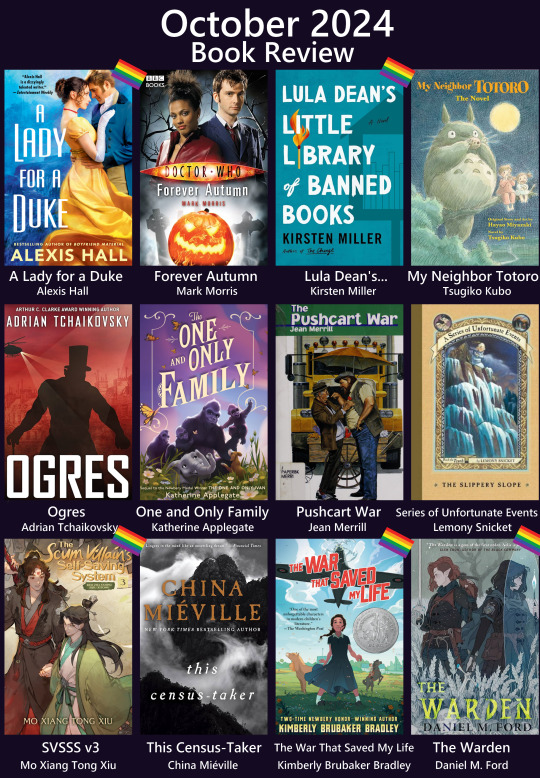
Read some delightfully impactful books this month, it was a very satisfying assortment of stories! My biggest recommendation is Lula Dean's Little Library of Banned Books, I'm telling everyone I can to read that book. Funny, meaningful, and sort of lights a fire under your ass, makes you want to make the world better.

Doctor Who: Forever Autumn
My obligatory Halloween-y read. Like many Doctor Who books of this particular calibre it was a fine and entirely forgettable read. It was fun to have an autumn-themed setting and villain, and I always love when Martha’s around. They wind up needing to deal with “no no it’s not magic it’s definitely just science we don’t understand for sure for sure” and some pumpkin-headed terrors. It was a pleasant thing to have playing as an audiobook while driving to work amid autumn leaves.

A Lady for a Duke
This had so much potential but honestly failed to live up to it imo. This story is very deliberately tipping its hat to Shakespeare’s Twelfth Night and the initial set up is really promising. Injured and presumed dead during the Battle of Waterloo, transwoman Viola Carroll seizes her chance to remake her life and live the way she wants. She becomes the lady's companion to her brother’s wife (the only two who know that she’s alive) and with their help begins figuring out how to fit into this new life. However when an old childhood friend, the Duke of Gracewood who had fought alongside her in Waterloo, seems to be in a bad state she finds herself being forcefully drawn out of her quiet, secluded life and put at risk of being recognized by someone who had known her before.
Excellent premise! The characters are fun, Viola is an enjoyable protagonist, Gracewood is a decent romantic lead, and Viola’s sister-in-law is easily my favourite character in the book, she’s a DELIGHT, especially when paired with her husband. The first half of the book is also pretty well done, with lots of mistaken identity and pining, very much in the spirit of Twelfth Night. Unfortunate the second half is where it loses all momentum. The dialogue becomes repetitive and the romance rather dull, the B-Plot is really the only thing dragging the plot along at that point. It also loses any real touch with historical attitudes towards queer issues — it was always a light touch, but it quickly becomes everyone repeating All The Right Things to each other ad nauseum, without any real exploration of queer identities in a Regency period. Which, to be fair, is probably what some people want, very low stakes and chill romance, but for me it took the wind out of the book’s sails, I would have loved more discussion. It would have made the sex more interesting at least.
That being said, if you want a soft, pleasant, historical trans romance, I would honestly give it a shot. If nothing else the first half is REALLY quite good, I couldn’t put it down, and the last half isn’t so bad that it damns the whole thing. It’s worth it if this is what you’re keen on.

Lula Dean’s Little Library of Banned Books
Easily my favourite book from October, this book managed to hit on very topical subjects with both tact and humour. In a small town in Georgia, Lula Dean has spearheaded a book banning crusade, managing to get a number of “problematic” books removed from the library and has made a show of setting up a Little Free Library in her yard full of “appropriate” books instead. When Beverly Underwood visits her mother and hears about this she’s so exasperated with it all that she quickly hatches a plan. The night before she leaves for home, she takes the banned library books from where they’re being stored and swaps out their dust jackets with the ones in Lula Dean’s Little Free Library. The rest of the story is about various people in the town who borrow a book from Lula Dean’s library and how the book they got instead ends up impacting not just themselves but their town. The first story involves a penis cake. Can’t recommend it enough, starts out humour and quickly becomes something you want to rally around.

My Neighbour Totoro
This was an enjoyable read just because I like Totoro in general, but it was not the best novelization I’ve ever read. Honestly I think it mostly suffers from a less-than-ideal translation… the whole thing comes across as quite stilted and I have a feeling the language was prioritised over the flow and intention. It was fine, cosy to sit and read, gives a couple scenes that aren’t in the movie that were interesting, but overall it won’t deliver anything the movie doesn’t do better.

Ogres
Absolutely fascinating novella, and a very rare example of a story told absolutely perfectly in second-person. If you’re looking for something a bit different and thought-provoking, this was a good read.
Ogres rule this world. They’re bigger than you. Stronger than you. Have magics you could never comprehend. The natural order of the world is for humans to serve ogres. However you, as the son of the village headman, live an idyllic sort of life… until the ogre landlords come to call and everything begins to go wrong and you're facing realities and secrets you never could have imagined.

The One and Only Family
I read this one mostly because I wanted to finish off the series. The One and Only Ivan is a fantastic novel that is a fictionalised account of a real silverback gorilla that was poached and brought back to the United States to live in a small cage in a roadside mall. The first story is about him, his friends Bob and Ruby, and his life in captivity. The second and third book are about Bob the dog and Ruby the elephant respectively, and this last book focuses back on Ivan, his new life in a zoo, and his growing family. Honestly all the other books in this series were fine for kids, had some good ideas behind them, but were otherwise somewhat bland. I’m glad I finished the series but they don’t hold a candle to the first book.


The Pushcart War
Now this was a fun children’s novel, recommended to me by my New York girlfriend who says it’s a staple in New York classrooms — and I can see why, it’s an incredibly fun read. A prime example of a well-done under-dog story, very satisfying! The book is a “historical account” of the “New York City Pushcart War”, in which the city streets are hopelessly congested and everyone is suffering. The worst offenders are the big trucks which just seem to get bigger and bigger, and pushier and pushier. The trucking companies hatch a plan on how to gradually push out all other competition: they’ll start with the little, old-fashion pushcarts, try to villainize them until they’re entirely removed from New York City... and if no one speaks up for them, then how hard will it be to push out the taxis next? Or the automobiles? However, the scrappy little push-cart owners fight back. It’s very much written to be an allegory for actual wars, played on a smaller scale which some delightful wit and an interesting narrative voice.






Series of Unfortunate Events 4-10
I continue to read A Series of Unfortunate Events. As a child I had only ever read up to The Carnivorous Carnival so it’s exciting to strike into new territory with The Slippery Slope. I really enjoy the slippery slope you see the Baudelaires beginning to get caught in as the series progresses, how they have to start making concessions and doing things they wouldn't have considered doing at the beginning, and how their views of the world is beginning to evolve. Austere Academy, Ersatz Elevator, and The Vile Village are my favourite of this set.

The Scum Villain's Self-Saving System v3
I finished the main series of The Scum Villain’s Self-Saving System and I’m not ready for it to be over ;^; I’m in the process of reading the last book of bonus stories and trying to savour it. I was hugely judgemental about this series and was tempted to skip it entirely, but I’m so glad I actually sat down to read it. Out of all of MXTX’s series, this one has, in my opinion, the least palatable main relationship and I say that with deep and profound affection. It's passionate and complicated and slightly horrifying but I don't think you could write it any other way. Every single thing about this story is messy and I think that really works in its favour.
Shen Qingqiu is an incredibly biased narrator, and it’s really interesting to read a story in which the main character tends to think of those around him more as characters in a book than as genuine people. You get to see how him viewing himself as a passive observer instead of an actual person with agency who can have an impact on others continuously trips him up, and how his actions have far reaching consequences that he fails to recognize. It makes this entire series a very meta exploration of storytelling and the impact people's personal narratives have on themselves and others. It really consistently shows how cruelty begets cruelty... but also how the choice to step away from easy resentment can break endless cycles. That's a common theme across her works, but the way its handled in this book particularly struck me.
Over all, it’s a fun, silly story with way more heart than I anticipated -- this last book really made me cry! I was so unprepared for the series to be over that I had to stare at the ceiling for a while to try to digest it all. If you were feeling debating whether or not to try this series, I’d honestly give it a shot because it brings way more to the table than the surface level plot would suggest.

This Census-Taker
Fucking weird novella. I grabbed this from the library because I quite enjoyed Railsea so I thought I’d try something else by this author. And I really liked it! But also what the fuck. Still don’t know if I absorbed everything that I was meant to absorb, but it’s obviously a book with a lot to say and did it through the most deranged and intriguing world building. China Miéville is great at creating unique worlds that feel alive and vibrant — this is the sort of world real people could live in, no matter how strange.
Goodread’s summary because gun to my head I’m not sure I’d be able to come up with a more functional explanation: “After witnessing a profoundly traumatic event, a boy is left alone in a remote house on a hilltop with his increasingly deranged parent. When a stranger knocks on his door, the boy senses that his days of isolation are over—but by what authority does this man keep the meticulous records he carries? Is he the boy’s friend? His enemy? Or something altogether other?” This doesn’t even scratch the surface but it does give a functional idea of the surface level plot. If you want something to sink your teeth in to and flex your analytical muscles, this one will do it for you.


The War That Saved My Life // The War I Finally Won
Absolutely stunning YA novel series, can’t recommend it enough. This series is centred on Ada, a girl born in the East End of London to an abusive mother who scorns her for her club foot. Ada is forced to stay in the apartment, is severely neglected and mistreated, and does her best to take care of her younger brother during all this. When news of WWII arrives though and people begin sending their children away from London to live in the country, Ada is determined to run away with her brother and get them both onto one of those trains, to find a better life far from the threatened bombs and their mother. The story followers Ada and Jamie finding a new home and contending with the trauma they’ve lived through during the throes of World War 2.
(* in regards to the queer content of this book: it is entirely subtext however it is such obvious subtext that I feel fine labelling it as queer, it's beautifully done -- very much a "haunting the narrative" sort of plotline)

The Warden
A “cosy fantasy” novel that was a fairly decent attempt at the genre. I find some cosy fantasies fail (for me at least) just because… nothing happens. This novel sort of straddles the line between cosy fantasy and standard fantasy in a way that I found quite satisfying and kept things from getting boring.
Aelis de Lenti is a newly graduated necromancer from the Lyceum who has accepted the position of Warden in the remote village of Lone Pines. Admittedly she had been hoping for a posting in an actual city with actual modern amenities but here she is. Surrounded by sheep shit and villagers who don’t trust her, in a crumbling wizard’s tower. Great. The story is about her gradually finding her space in this community, learning how to handle her position, and generally getting to kick ass and take names. It was a fun read.
#book review#book reviews#doctor who#svsss#mxtx#my neighbor totoro#a series of unfortunate events#asoue#ghibli#hayao miyazaki#queer lit#lgbt books#china mieville#the war that saved my life#the pushcart war#the warden#daniel m ford#katherine applegate#the one and only ivan#the one and only family#lula dean's little library of banned books#ogres
12 notes
·
View notes
Text
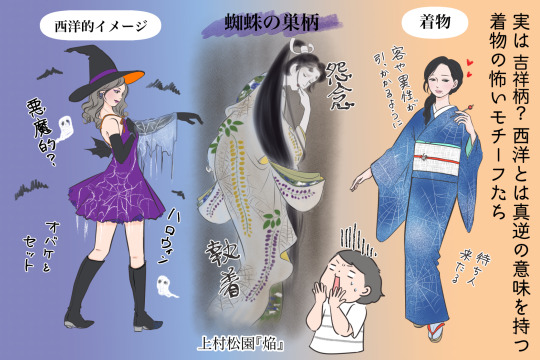
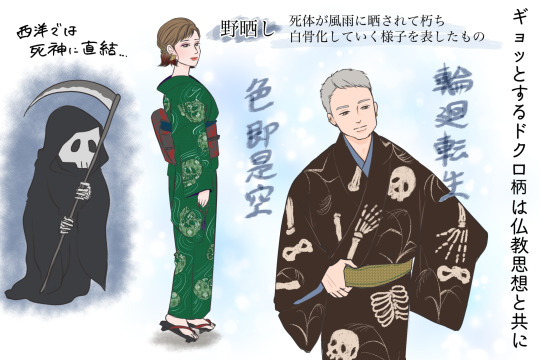

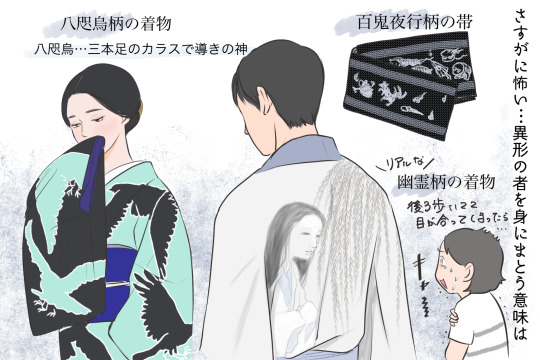
Lovely article+illustrations by Kimono Ichiba (via Tanpopo <3), overviewing famous "scary"patterns... which are in fact often auspicious as traditional Japanese patterns ;)
I believe I have them all on the blog somewhere but it's nice having them in one place so let's go!
Spiderwebs (kumo no su)
In ancient China, spider were seen as auspicious messengers connecting Heaven to Earth.
As the spider catches its prey in its web, spiderweb came to signify "grasping happiness".
Apparently during Edo period, prostitutes and geisha used spiderweb patterned items as a good luck charm (meaning something like "this customer will come back").
A very famous spiderweb depiction is the Lady Rokujo ukiyoe [焔 honô (the flame of passion)] by female artist Uemura Shoen. Wisteria caught in the web could mean ``I hope [Prince Genji] will come tonight'' which is pretty sad considering her story T_T
Skulls (dokuro)
Exact name for human remains pattern is "nozarashi" (lit. "weather beaten") ie bones scattered in a field. This depicts a corpse turned to bones/unveiled from its grave by the elements.
Skulls are thought to ward off evil and bad luck. Bones can also symbolize a do-or-die spirit, or hope for rebirth after death.
OP stresses a theory linking bones pattern to a buddhist saying 色即是空 shikisokuzekū "form is emptiness, matter is void, all is vanity". An interpetation is that we'll all turn to dust one day so we're all equal.
Bones patterns are often seen during Obon (Festival of the dead) season.
Monsters, ogres and ghosts (yôkai / oni / yûrei)
Monsters patterns were then worn to ward off bad luck and evil spirits. Reasoning is: let's repel scary things by wearing an even scarier monster!
Fearsome monsters were especially use by people with dangerous jobs, like Edo period firemen.
Firemen often had the lining of their heavy fire attire (火事装束 kajishouzoku) embelished with lavish designs of brave heroes and fantastic monsters. It was both a talisman and a way to show that they did not fear danger or death.
Another reason behing monsters patterns is the Edo period love for "scary" entertainements, be it ghost stories, parlor or other types of games, art (see for ex. Utagawa Kuniyoshi), etc. And Edo city dwellers were all about being fashionable so a monster pattern would have been considered quite iki!
#japan#art#history#pattern history#kimono#obi#halloween#spider#spiderweb#kumo#kumo no su#skull#skeleton#dokuro#nozarashi#weather beaten bones#obon#monster#youkai#oni#ghost#yurei#firemen#kajishouzoku#kaidan#ghost stories#Hyakumonogatari Kaidankai#One Hundred Supernatural Tales#Kimodameshi#Test of courage
1K notes
·
View notes
Text

Architectural brick with ogre mask, China, Tang Dynasty, 8th century
from The Art Institute of Chicago
306 notes
·
View notes
Note
do you have any thoughts on where rin could be from? I've seen ppl say she could be Chinese or Malaysian but there's barely any info on the eastern archipelago other than Wa
This is a fun question! We have very little information to go off of, that's true, but we do know some things!

(This is an excerpt from a map of the Dungeon Meshi world I'm working on for my essay.)
This is what the Eastern Archipelago looks like, minus the one medium-sized island that is populated by dwarves.
Wa Island has a culture similar to the Sengoku period of Japan.
Izutsumi is from the large island to the northeast of Wa.
Izutsumi's succubi turned into a woman wearing Central Asian clothing similar to a Mongolian deel, and Izutsumi thought that this was an illusion of her mother. Though we now know this isn't exactly true, the succubi is a psychic monster, so it must have pulled the clothing from Izutsumi's memories, something that she recognized from her childhood, and would expect her mother to wear. Since clothing like the deel doesn't seem to be worn in Wa, we can assume that this type of clothing is worn on the island that Izutsumi is from instead. So this island may be similar to Central Asia, which consists of Mongolia, Kazakhstan, Kyrgyzstan, Tajikistan, Turkmenistan, Uzbekistan, and Afghanistan.
We know that ogres used to control the Eastern Archipelago, and on the ogre race illustration page, Kui shows the majority of the ogres wearing clothing that could be influenced by Chinese, Japanese, Korean or Mongolian clothing. 7 of them have Asian-inspired clothing, 4 have indistinct but not-Asian looking clothing, and the rest have no visible clothing.
We don't know what any of the other parts of the archipelago are like, but I think it wouldn't be crazy to assume they resemble other parts of Asia, such as China, Korea, etc.
The far eastern side of the Archipelago is neighbors to the Western Continent, a region that appears to be home to Greek, Roman, and South and West Asian cultures. So it would make sense if some cultural influence from the West naturally migrated across the ocean to the far-far East.
Now, what do we know about Rin?

The beginning of her bio reads: 両親は東方群島 東地方からの流民だが. This translates as: "Her parents were refugees from the eastern region of the Eastern Archipelago." This is interesting because it's different from the official English translation by Yen Press. Their translation skips the second mention of the east, and also calls her parents wanderers instead of refugees: "Her parents were wanderers from the Eastern Archipelago." The original Japanese says east twice, 東方群島 (Eastern Archipelago) and 東地方 (Eastern region). I think the translator, a contractor who doesn't have time to fact-check, maybe didn't understand why Rin's bio said east so many times (the sentences before and after also mention "east" many times) and just didn't bother including what seemed like a redundant mention of it.
SO WHAT DOES THAT MEAN?
What it means is we actually know what part of the Archipelago Rin is from!
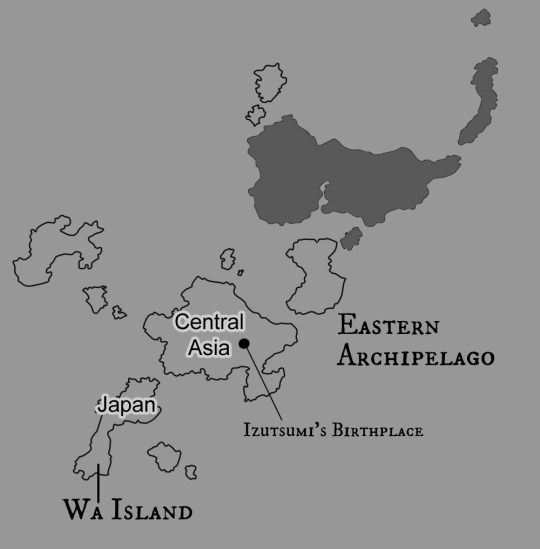
Obviously this is only speculation, but I would guess her family originally came from one of the islands I've colored in dark gray here, since they are the furthest east part of the Archipelago.
WHAT CULTURE COMES FROM THOSE ISLANDS?
(I talk about some of this in chapter four of my Dungeon Meshi essay in the section about Rin.)
We don't know! However, remember what I said about how the far-east of the Eastern Archipelago is neighbors with the Western Continent?
The Western Continent is a region dominated by western elven culture. Therefore it makes sense that this part of the Archipelago should have had the most contact with the elves, and foreign tall-men who are a part of elven culture. There should be cultural mixing between the two groups... And there is! Rin's name is evidence of it!
Rinsha Fana (رينشا فناء), is an Arabic name. Arabic is one of the languages Kui associates with the Western elves, which would mean that in-universe, Rinsha Fana is an elvish (or at least Western) name.
THE SIMPLE ANSWER
It's possible that there is a fusion culture in the far eastern islands, and it's the natural result of contact between the West and the East.
Since Rin's name is Arabic, we could theorize that the far-east of the Eastern Archipelago is similar to various Asian cultures in the real world that were influenced by the Arabic world historically.
The ones that I could find are Myanmar, Cambodia, Vietnam, Thailand, the Philippines, Brunei, Indonesia, Malaysia, China, Uzbekistan, Kyrgyzstan, Tajikistan, Turkmenistan, and Kazakhstan.
So the Fana family's home island might be similar to any of those! It's a long list, but it does narrow things down a little bit!
THE COMPLICATED ANSWER
In addition to the fact that the far-eastern islands are physically close to the Western Continent and there being some cultural fusion there, we also know that there are groups of elves in Dungeon Meshi who behave similarly to missionaries in the real world.
There may or may not have been a religious component, but these elves felt it was their moral duty to spread elven culture and knowledge (including elven style magic) to the short-lived races, and improve their standard of living.
Since the far eastern islands of the Archipelago are the closest to the West, it makes sense that elven missionaries would have had a presence there, just like it makes sense that they would have had a presence on the far western coast of the Eastern Continent.
It's strongly implied that Rin's parents may have practiced elven-style magic, since if they had practiced Gnomish magic (the dominant style in the Eastern Archipelago and the Northern Continent), they might have been able to join a local organization (a church, a school, a royal court) in the Northern Continent and not been lynched. Something about their magic was "foreign" and scared the people of the Northern Continent.
The original Japanese text explicitly says they were lynched (私刑).
Kui also explicitly tells us that Rin’s family was lynched in the Northern Continent, using the word 私刑. Lynching is an extrajudicial public execution by an in-group against someone who is outside of their social circle, who has somehow “transgressed” against the in-group. Usually the “transgression” is something like being a foreigner, being of a different race, different ethnicity, practicing a different religion, or behaving in any unusual way (being neurodivergent, gender non-conforming or homosexual).
The Fana family fled the Archipelago, didn't change their family name, and then gave their daughter a western/elven personal name as well. This implies that they are unwilling to give up their culture, even under circumstances where it would be safer to assimilate. This suggests that the culture is very important to them.
WHY DID RIN'S FAMILY LEAVE THE EAST?
We don't know exactly, but the original Japanese text says they were refugees. This implies that they left their homeland due to some kind of danger or threat to their lives.
We know that the Eastern Archipelago is constantly at war with itself, and that could be enough reason for a family to flee. But because of the history of Christianity in Japan, Rin's name, and her family's behavior, I think there may be something more to it.
We know that there are treaties between the nations in Dungeon Meshi that prevents the long-lived races from colonizing the Eastern Archipelago. The nations of the Eastern Archipelago most likely consider any influence from the long-lived races a threat to their sovereignty, and they are probably making an effort to keep long-lived races and their culture out of the region.
This sounds very similar to Sakoku (鎖国 Literally "locked country") an isolationist foreign policy in Japan that began at the end of the Sengoku era (the era that Wa appears to be in the middle of). Under this policy, relations and trade between Japan and other countries were severely limited, and nearly all foreign nationals were banned from entering Japan, while common Japanese people were kept from leaving the country.
The sakoku policy was enforced in order to remove colonial and religious influence from European countries, which were perceived as posing a threat to the stability of Japan.
Japanese people who had converted to Christianity were seen as traitors, and missionaries were foreign enemies trying to undermine Japanese society. Conversion to Christianity, the dominant religion of Europe, was seen as the first step of European nations trying to colonize Japan.
Part of the sakoku policy was the Japanese government officially persecuting, torturing, and executing somewhere between 2,000 and 5,000 Japanese Christians and foreign Christian missionaries. This forced Christians in Japan to either go into hiding, flee the country, or renounce their faith in order to survive.
I think an attitude like this towards foreign culture would logically be common throughout the entire Eastern Archipelago, and not just the island of Wa.
So local people like Rin's family who might have adopted Western elven culture (magic, names, clothing, etc.) may have been seen as a threat, and may have been pressured to renounce their ways, or leave.
The cultural backlash would be extreme, and could easily cause civil war and instability, especially in any areas that have a large Western cultural influence, like I've theorized the Fana family's home island to have.
In the end, I think no matter which way you choose to interpret the information, it's clear that Rin's family has a connection to both East Asia and Arabic culture... So start there, and see what cool ideas you can come up with!
54 notes
·
View notes
Note
if you're not reading the last book of SVSSS right now do you mind me asking what you are reading? I'm just curious!
Definitely! (though I warn you, I'm fundamentally incapable of reading only one thing at a time)
For physical books, I'm currently reading The Warden by Daniel M. Ford, the novelization of My Neighbour Totoro, and trying to keep up on Dracula Daily (i am failing this)

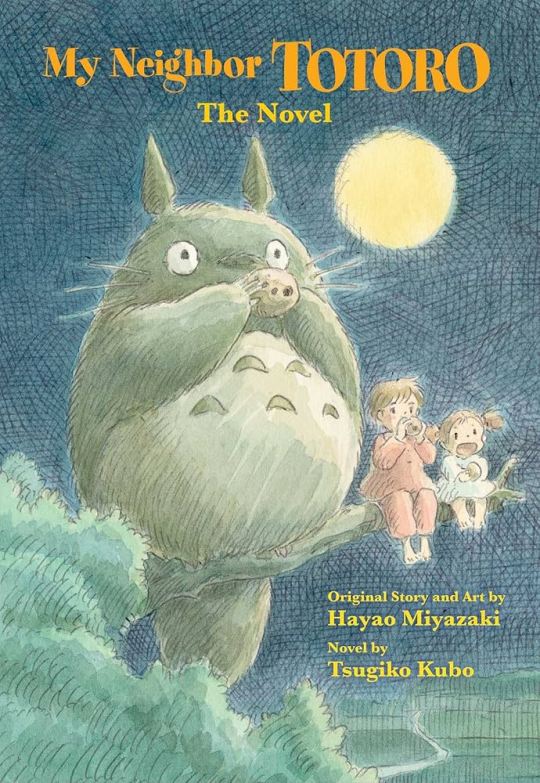
For audiobooks, I've been relistening to The Series of Unfortunate Events (because I never actually read them all when they were originally coming out) and I juuust finished This Census-Taker by China Miéville and Ogres by Adrian Tchaikovsky this weekend. I'm about to start A Closed and Common Orbit by Becky Chambers.
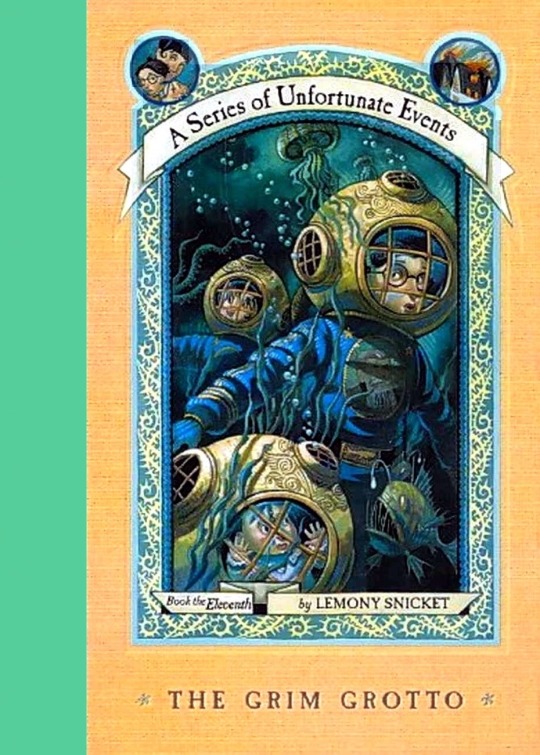
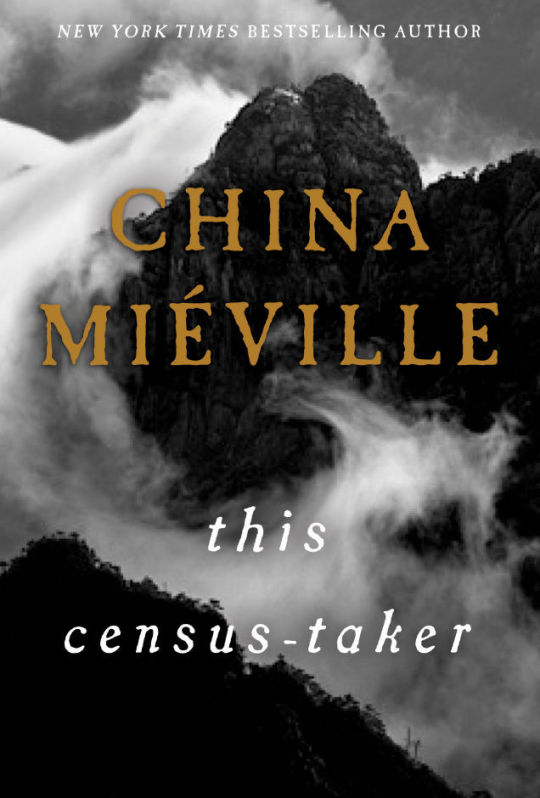

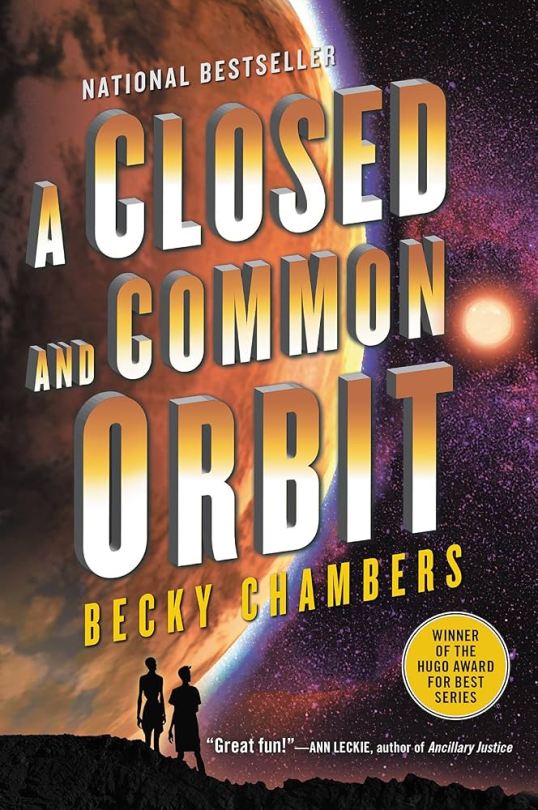
#i bounce between things a lot :P it all depends on *`~Vibes~`*#once i'm done The Warden i'll probably get started on SVSSS v4#this census-taker and ogres were both strange little novellas i was trying to wrap up so i spent a lot of time this weekend#working on a puzzle and just finishing them#completely bizarre but both gave me a lot to think about they both had some very cool writing and themes#as for a series of unfortunate events i'm officially the farthest i've ever been in the series!#i reread the first 3 books a ton - whenever i was at my friends house and she was doing homework when i wasn't since she was collecting the#but i kinda fell off them after the carnivorous carnival#waiting a whole year for the next book is hard when you're in elementary school!#anyway i'm enjoying them a lot as an adult i'm picking up way more nuance than i did as a kid (obviously)#and snicket's writing it always fun no matter the age#thanks for asking! i love an excuse to ramble about books >:3
22 notes
·
View notes
Text
『📜』 ── Her family

Mother -`♡´-
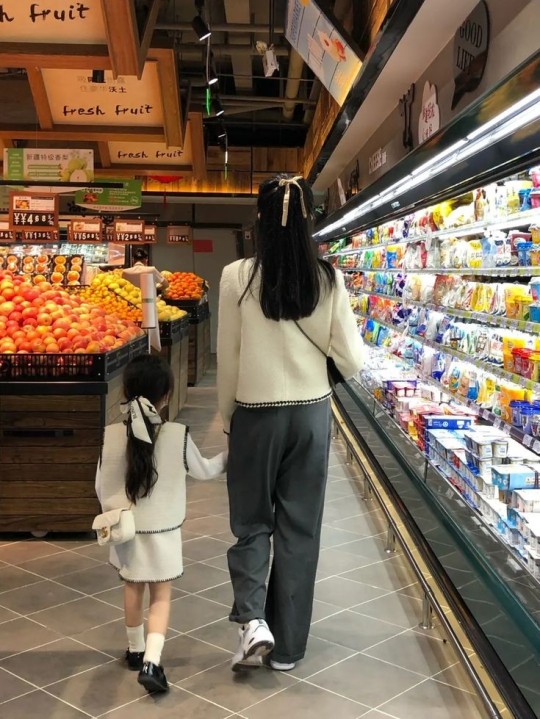
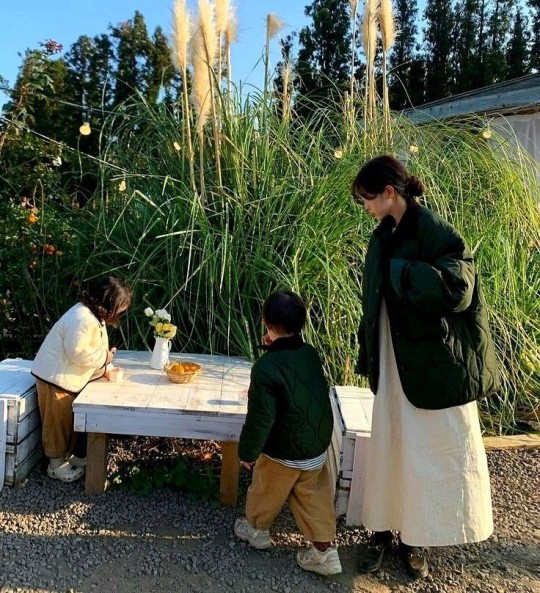
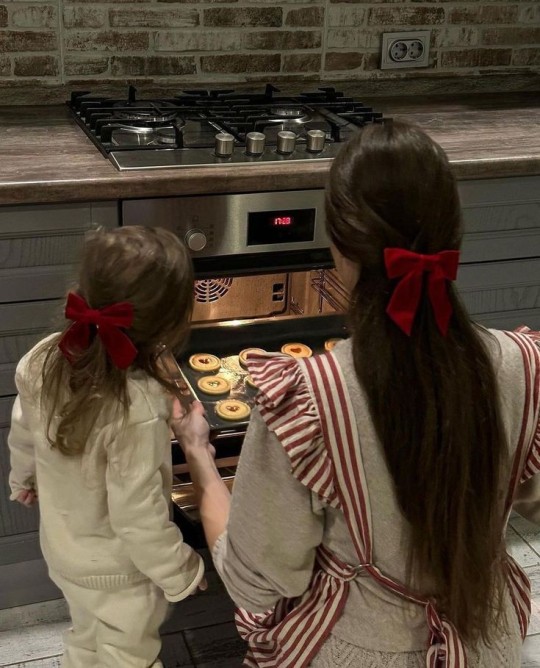
╰ birth name — Bae Gyu-mi (최광민)
╰ other name — Grace Bae
╰ birthdate — February 22, 1964
╰ birthplace — Gangnam, south korea
╰ hometown — Gangnam, south korea
╰ race — Asian
╰ ethnicity — Korean
╰ nationality — Korean
╰ mbti — ENTJ
╰ occupation — Financial Advisor
╰ contact name — Boss lady 👑❤️ / chér ❤️❤️
⸝⸝ about ↴
Rin has always been very close to her mom ever since she was a child always wanting to match outfits with her and do the things that she did. Grace is the one how thought Rin how to sing and is the reason that Rin is so passionate about wanting to debut as an idol.
Grace as a parent is a bit stoic and considerably rigid about certain rules that she has set always wanting to make sure her kids are independent and can make work on their own. She has always had certain expectations from her kids but never implies them to the point of hurting the kids. Although she is definitely the stricter parent it's just because she wants to make sure her kids are able to stand on their own in the world without any support. She is overall a more calm and rational person.
Father -`♡´-
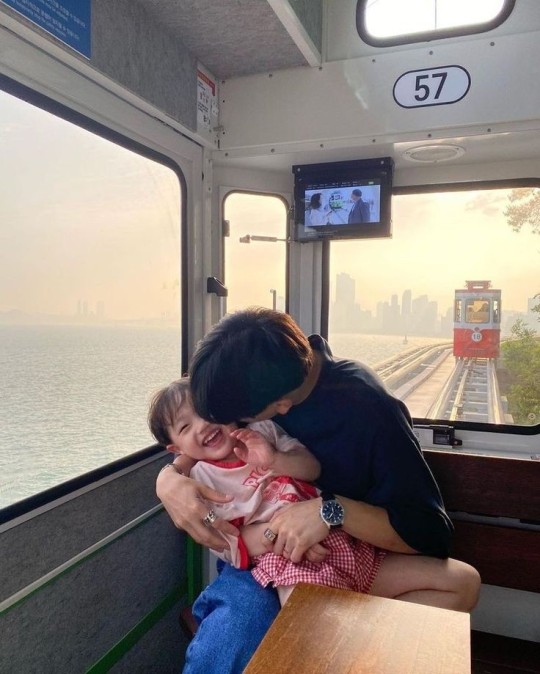
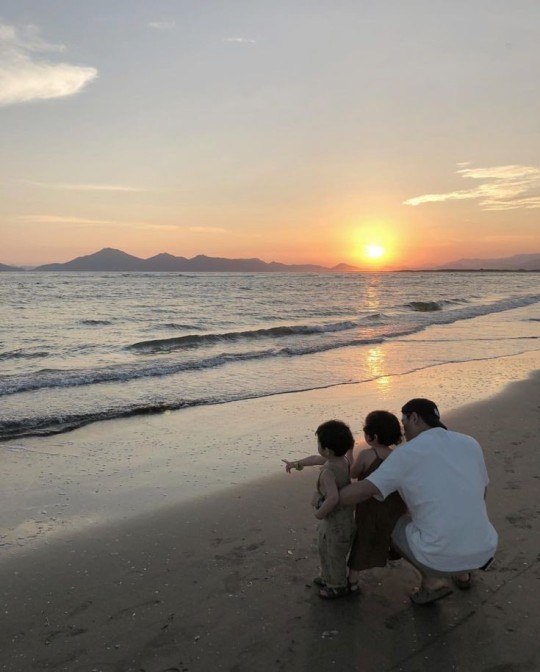

╰ birth name — Bao Weizhong (鮑 伟忠)
╰ other name — Daniel Bao
╰ birthdate — August 4, 1970
╰ birthplace — Hefei, China
╰ hometown —Hefei, China
╰ race — Asian
╰ ethnicity — Chinese
╰ nationality — Chinese
╰ mbti — INFP
╰ occupation — owner of his own company
╰ contact name — 爸爸 🥺♥️ / 小鸣鸟
╰ about ↴
Rin's father is probably the most supportive man known to mankind. He has always supported whatever dreams she may have had always playing into her whims and fantasies regardless of however silly they may be. He was and still is her biggest hypeman.
As a parent Weizhong has always tried to introduce his kids to new adventures and make as many memories as possible. He loves to live in the moment often taking his kids on spontaneous trips. He does try to pass down his values through trips or stories. He hopes to make sure that his kids are aware that he will always be there to support them and that they shouldn't be afraid to make mistakes.He is in general a sweet and carefree sort of person.
Brother -`♡´-


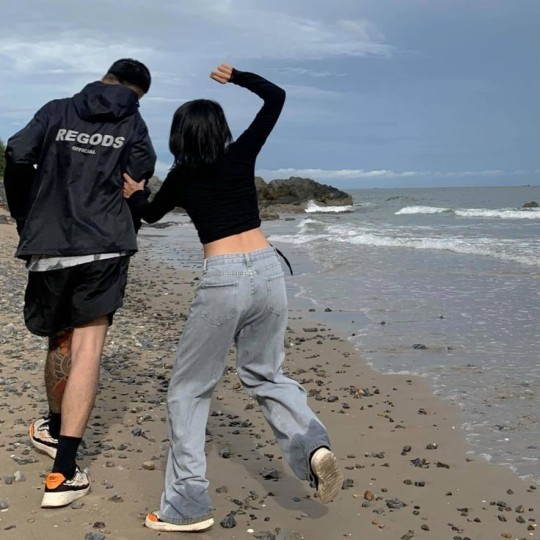
╰ birth name — Bao Longyu (鮑 隆雨)
╰ other name — Julien Bao
╰ birthdate — N/A
╰ birthday celebration - April 14, 1999
╰ birthplace — Shanghai, China (assumed)
╰ hometown — Shanghai, China / New york city, New york
╰ race — Asian
╰ ethnicity — Chinese (assumed)
╰ nationality — Ameican
╰ mbti — ISTJ
╰ occupation — Chief operations officer at their dad's company
╰ contact name — ogre 🧌🤢 / shrimp 🦐
╰ about ↴
Rin's brother has always been the biggest constant in her life, the first time that she was away from him was when she moved to Korea to be an idol. He is the calm to her chaos, her voice of reason ever since she was young always making sure she didn't take any rash decisions.
Rin's parents adopted him on a family trip to china when Rin was barely a year old after doing some medical tests and such it was found that Longyu was two years old which made him a year older to Rin. Longyu has always been a calm person preferring to stay quietly at home and read books and talk with his mom rather than go out but he'd often go and hangout with Rin's friends to 'chaperone' and make sure she stays safe. He is a very collected and level-headed person with Rin being the only one who can actually test his limits.
Pets -`♡´-
China



From L -> R
name — XueXue
╰ about ↴
Her name is just the chinese word for snow repeated twice to make it sound very cutesy
Xuexue is a pure white persian cat
XueXue is one of the more recent adoptions to the family. Rin's dad bought her home from the shelter after she refused to even be looked at by someone else often hissing at people wanting to adopt her.
XueXue is a princess to put it simply she is very much spoilt and she adores it. She has her own closet and picks her own accesories of the day!!!
2. name — Spiky
╰ about ↴
His name is pretty self explanatory. He has spikes so he's named spiky
Spiky is an African Pygmy hedgehog.
Spiky was found on the roadside under heavy rain one time when Rin's dad was on his way home from work so he picked the little hedgehog up and decided to care for him.
Spiky is a solitary animal preferring to spend time in hos cage or walk alone in the garden although he loves bath time and has shown to get extremely excited during that time playing around in the water even accepting pets and cuddles
3. name — Xun
╰ about ↴
His name means 'dusk' in chinese referring to his mix of dark and light fur
Xun is a pekingese dog which is a breed native to china
Xun along with his mother and siblings was rescued by Rin's father from a breeder. Xun's mother sadly passed away from the extensive stress of the breeding corporation. Rin's father decided to adopt Xun after all of his siblings had been adopted by various people.
Xun has a constant case of the zoomies always running around and wanting to play and have fun, constantly barking to draw attention. running up and down the stairs even occasionally tripping people or breaking artifacts. But it's all okay cause he's a cutie.
NewYork

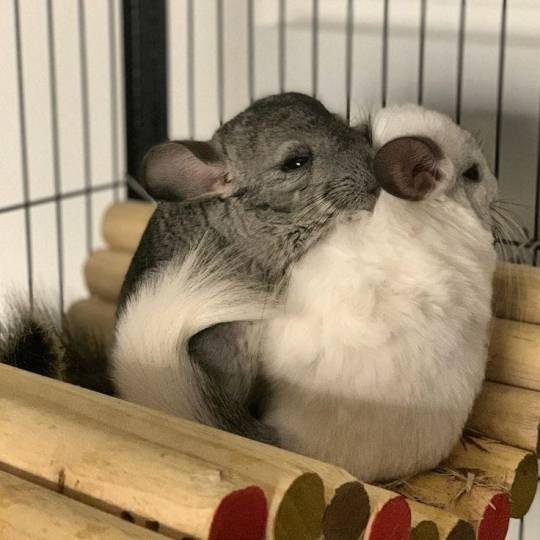
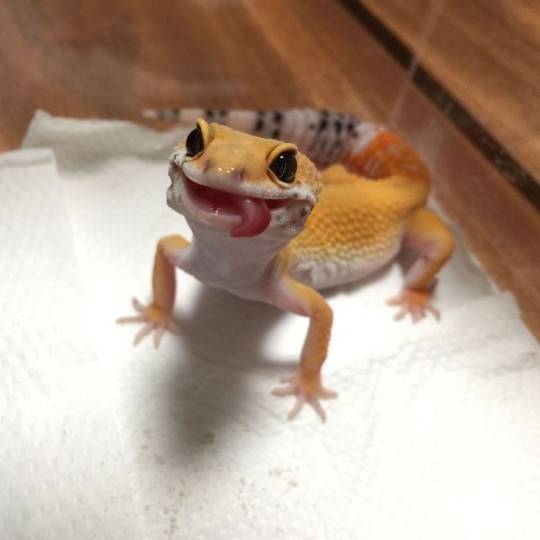
From L -> R
name — Ttang
╰ about ↴
His name is basically the ending of korean word 'seoltang' and 'satang' meaning sugar and candy respectively.
Ttang is a toy poodle
Ttang was the first pet that Rin got as a child, she got him as her 6th birthday present and was ecstatic
Ttang is a very quiet and low energy dog preferring to cuddle up with someone rather than play around
2. name — Coco & Cece
╰ about ↴
Rin tells people that they were named after coco chanel and celine dion but really coco was named after chocolate and cece was named after cece from shake it up...
coco and cece are two chinchillas. Rin adopted them in the year 2013 from a friend who was moving to Australia since they're illegal in Australia.
coco is the one with darker fur while cece has lighter fur
personality wise the two differ greatly coco is pretty playful and loves interacting with the other pets or people who come and go into the house where as cece has a specific list who are allowed to touch her.
3. name — Thirio
╰ about ↴
His name means 'beast' in greek. He was named by Rin's brother who was obssesed with dinosaurs and wanted to give him a dinosaur-ish name.
Thirio is a leopard gecko
Thirio was adopted from a pet shelter only sometime after coco and cece were adopted since he was the closest Longyu could get to a real life dinosaur.
very much unlike the meaning of his name Thirio is a very silly guy and loves to make funny faces. The only beastly thing he does is eat the way he eats.

#BREATHING STARDUST ── .𖥔 ݁ ˖ STORGE#AND SO THE SAGA CONTINUES ── .𖥔 ݁ ˖ RELATIONSHIPS#Rin -; Relationship#skz oc#skz 9th member#skz x reader#skz imagines#skz#straykids imagines#stray kids incorrect quotes#stray kids fluff#stray kids x reader#stray kids imagines#stray kids#fictional idol community#fictional idol company#fictional idol group#fictional other#fictional characters#fictional kpop community#kpop incorrect quotes#kpop moodboard#kpop gg#kpop icons#kpop#kpop layouts#skz female addition#skz female member#skz female oc#idolverse
36 notes
·
View notes
Text
Romanian Folklore
Balaur-
In Romanian mythology, a balaur (pl. balauri) is a many-headed dragon or gigantic snake that is often supposed to have wings. According to certain stories, the number of heads is generally three, although it might be seven or twelve.
In folktales, the balaur is often wicked, demanding or abducting young maidens or princesses before being destroyed by a hero like Saint George or the fair youngster Făt-Frumos. There is some legend that the balaur is responsible for weather and lives in an airborne condition, although these versions of balaur are frequently referred to as hala or ala, which is confused with the pan-Slavic air and water demon. According to some stories, the weather-controlling Solomonari drives a balaur rather than a zmeu.
There are additional stories about the balaur and their ability to generate rare stones from their saliva. Furthermore, it is stated that whomever succeeds to kill it will be forgiven a sin.
In Romanian, balauri are "monstrous serpents" or dragons. Alternatively, the word balaur can refer to any monster-like entity. They have multiple heads, like the Greek hellhound Cerberus or the hydra.According to Lazăr Șăineanu, they are winged and golden. According to journalist Eustace Clare Grenville Murray, in Romanian tradition, the balaur or balaurul is a serpentine monster that guards treasures and princesses, occasionally clashing with the valiant Fêt-Frumos.
According to folklorist Tudor Pamfile, there are three sorts of balauri in folklore: water-, land-, and air-based.[6] A first-type balaur is a seven-headed monster that lives in a village well and demands maidens as sacrifice until vanquished by either the hero Busuioc or Saint George.[6] The second sort of balaur, according to Pamfile, lives in the "Armenian land" (Romanian: ţara armenească), where they manufacture valuable stones. According to American writer Cora Linn Daniels, in Wallachia, balaur saliva is said to generate valuable stones. Mircea Eliade, a Romanian scholar, observed that the belief that valuable stones are generated from snake spittle is widespread, extending from England to China.
The balaur is frequently connected with the weather and is also known as hala or ala, which is typically a Slavic name for a weather demon. Pamfile refers to this as the "third type" of air-dwellers.When two balauri collide and fight in the air, a variety of meteorological effects occur, such as tree uprooting or things being scattered. Another story holds that the balaur follows the rainbow and draws rainwater from any location to generate rain. There is additional mythology about the balaur that is claimed to be quite similar to Bulgarian Banat lore about the lamia (locally known as lam'a), which indicates that the lam'a pull water from the sea to fill the cloud.
Although the Solomonari's dragons are commonly referred to as zmei (sing. zmeu), some accounts suggest that they were balauri. These weather-controlling sorcerers controlled a balaur with "a golden rein" (or golden bridle; Romanian: un frâu de aur). Dragons were often kept concealed in the depths of a lake until called by their riders.

Căpcăun-
In Romanian folklore, a Căpcăun is portrayed as an ogre that kidnaps children or young females (usually princesses). It denotes evil, as do its equivalents Zmeu and Balaur. In most Romanian translations of other European literature, the names of creatures such as ogres or trolls are frequently rendered as căpcăun. The Romanian name appears to have meant "Dog-head" (căp is a variant of cap, meaning "head", and căun is a derivation of câine, meaning "dog"). According to Romanian folklore phantasy, the căpcăun has a dog head, sometimes with four eyes, with eyes in the neck, or with four legs, but whose major trait is anthropophagy.
Thatpcăun can also mean "Tatar chieftain" or "Turk chieftain" as well as "pagan". Some linguists believe căpcăun is an echo of a title or administrative position, such as kapkan (also kavhan, kaphan, kapgan), used by several Central Asian tribes that invaded Eastern Europe throughout late antiquity and the mediaeval era, including the Pannonian Avars, Bulgars, and Pechenegs.

Dhampir-
In Balkan legend, a dhampir (Albanian pronunciation: [ðamˈpir]) is a supernatural creature born from the mating of a vampire and a human. This union was mostly between male vampires and female humans, with reports of female vampires mating with male humans being uncommon.
Dhampirs and other mythical creatures are well-known in Balkan folklore. In the remainder of the region, titles like Serbian vampirović, vampijerović, and vampirić (hence, Bosnian lampijerović, etc.) literally mean "vampire's son" are used. In other places, the kid is referred to as "Vampir" if a male and "Vampirica" if a girl, or "Dhampir" if a boy and "Dhampirica" if a girl.[Citation required] In Bulgarian mythology, several titles such as glog (lit. "hawthorn"), vampirdzhiya ("vampire" + nomen agentis suffix), vampirar ("vampire" + nomen agentis suffix), dzhadadzhiya, and svetocher are used to refer to vampire children and descendants, as well as other specialised vampire hunters. Dhampiraj is an Albanian surname.
According to legends, dhampirs were generally accepted members of the community. However, dhampirs, particularly males of paternal vampire lineage, could see invisible vampires and practise magic, frequently embarking on careers as vampire hunters that would be passed down through generations. Some traditions describe indicators for recognising a vampire's children. According to Albanian mythology, they have untamed dark or black hair and are extremely crafty or fearless. They are not drawn to blood and can eat regularly like humans, yet the option of biting other living beings to extend one's life is always available.
When compared to vampires, dhampirs are considered to be very harmful to blood drinkers since a dhampir's blood and spit acts as an acid to vampires, rendering them incapable of being bitten. Because of their blended blood, dhampirs are not scorched by the sun.
In Bulgarian legend, such indicators include being "very dirty," having a soft body, no nails or bones (the latter physical characteristic is often attributed to the vampire itself), and having "a deep mark on the back, like a tail." In contrast, a prominent nose, as well as larger-than-normal ears, teeth, or eyes, were frequently used as indicators. According to J. Gordon Melton's book The Vampire Book: The Encyclopaedia of the Undead, in some locations, a real dhampir had a "slippery, jelly-like body and lived only a short life—a belief... that vampires have no bones."

Iele-
The iele are feminine legendary beings from Romanian mythology. There are several descriptions of their qualities. They are sometimes depicted as faeries (zâne in Romanian), with immense seductive power over males, as well as magical abilities and characteristics comparable to nymphs, naiads, and dryads from Greek mythology.
The iele are claimed to reside in the skies, woodlands, caverns, and solitary mountain cliffs, and have been observed bathing in springs or at crossroads. From this perspective, the Iele resemble the Ancient Greek Hecate, a three-headed Thracian deity who guards crossroads.
They mostly appear at night by moonlight, as dancing Horas, in secluded areas such as glades, the tops of certain trees (maples, walnut trees), ponds, river banks, crossroads, or abandoned fireplaces, dancing naked, with their breasts almost covered by dishevelled hair, bells on their ankles, and holding candles. In virtually every case, the Iele appear to be incorporeal. They seldom use chainmail jackets. The effect of their special dance, the Hora, is comparable to that of the Bacchantes.
The site where they had danced would later be carbonised, with the grass unable to grow on the trampled ground and the leaves of the nearby trees burned. Later, when grass grew, it would be scarlet or dark-green in colour; animals would not eat it, but mushrooms would flourish on it.
Dimitrie Cantemir depicts the iele as "Nymphs of the air, in love especially with young men" in his Descriptio Moldaviae. The origins of these beliefs are uncertain. Interestingly, the term iele is phonetically similar to the feminine plural version of the Romanian word meaning "they". Their true identities are kept hidden and unavailable, and they are frequently changed by nicknames based on their traits.
The names based on epithets are: Iele, Dânse, Drăgaice, Vâlve, Iezme, Izme, Irodiţe, Rusalii, Nagode, Vântoase, Domniţe, Măiestre, Frumoase, Muşate, Fetele Codrului, Împărătesele Văzduhului, Zânioare, Sfinte de noapte, Şoimane, Mândre, Fecioare, Albe, Hale, etc.
Personal names that appear include Ana, Bugiana, Dumernica, Foiofia, Lacargia, Magdalina, Ruxanda, Tiranda, Trandafira, Rudeana, Ruja, Păscuţa, Cosânzeana, Orgisceana, Lemnica, Roşia, Todosia, Sandalina, Margalina, Savatina, Rujalina, and so on. These names should not be used at random, as they might be the foundation for deadly enchantments. It is said that every witch learns nine of these pseudonyms, from which she crafts combinations, and which are the basis for spells.
The iele are claimed not to be solitary animals, but rather to assemble in groups in the air, where they may fly with or without wings and travel at amazing speeds, either alone or with fire chariots. The iele manifest in many forms, including bodies and immaterial souls. They are youthful and attractive, sensuous immortals whose fury causes madness in bystanders, possess terrible tempers, but are not always malicious. They appear in bunches of three or seven. This version is particularly common in Oltenia, where three Iele are regarded Alexander the Great's daughters, Catrina, Zalina, and Marina.
They are not generally regarded as evil genii: they only take revenge when provoked, offended, seen while dancing, when people step on the trodden ground left behind by their dance, sleep under a tree that the Iele regard as their property, or drink from the springs or wells that they use. Those who ignore their offer to dance or imitate their gestures face severe punishment. Anyone who suddenly hears their tunes becomes instantaneously silent.
One distinguishing feature is their wonderful vocals, which are utilised to lure their listeners, much like the Sirens from ancient Greek mythology. They are invisible to humans, although mortals can see them when they dance at night. When this occurs, they capture the victim and punish the "guilty" one with magical spells, having earlier made him to fall asleep with the noises and vertigo of the frantic Hora, which they dance around their abducted victim, causing him to vanish forever without trace.
The iele are also thought to be agents of retribution for God or the Devil, with the authority to avenge in the name of their employers. When called upon to act, they pursue their victims into the centre of their dance, where they perish in a fit of madness or pain. In this hypostasis, the Iele resemble the Ancient Greek Erinyes and the Roman Furies.
People set aside festival days to honour the iele, such as the Rusaliile, the Stratul, the Sfredelul or Bulciul Rusaliilor, the Marina, and so on. Anyone who did not observe these holidays was said to face the Iele's wrath: men and women who worked during these days would be lifted into spinning vertigo, people and cattle would die mysteriously or become paralysed and crippled, hail would fall, rivers would flood, trees would wither and houses would catch fire.
People also devised treatments for the iele, whether preventative or exorcistic in nature: garlic and mugwort worn around the waist, in the bosom, or hung from the hat; or hanging a horse's skull on a pole in front of the home. The most significant remedy is the Călușari dance.

Marțolea-
Marțolea is a malevolent monster from Romanian mythology (particularly in Bucovina and Maramureș). The entity's gender is unknown, as it may shapeshift at will. It resides in the mountains and descends on Tuesday evenings to seduce and punish women who are caught working. Called as Marţi Seara (the old Romanian terms for "Tuesday Evening"), is a malefic creature that insists that the semi-holy day of Tuesday be observed and bans four women's chores: spinning wool, sowing, boiling laundry and making bread. This is a pagan entity. Faun is one of his equivalents.
Marțolea's punishments for these actions are terrible, such as murdering by tearing and hanging the guts on nails to the wall and around the dishes in the case of unmarried women. For married women, the punishments include murdering or seizing their kid or a spouse who is away from home. It usually takes the appearance of a goat with a human-like head, horns, and hooves. It can transform into an unattractive old woman clothed entirely in black, a soldier, or a lovely guy. It portrays married women as an old lady, married men as a virgin, and unmarried women as a young charming guy.
In some locations, there is a separate character known as Joimârița, which is a variant of the Romanian word for Thursday. This one, however, penalises indolent children. Marțolea rewards the women who keep Tuesday sacred by leaving eggs on their doorsteps or flowers from the highest mountains in Bukovina. On the first night of March, women who wear March Trinkets (Mărțișor) are rewarded by Marțolea with a silver coin, which the girls must preserve for the entire year.

Moroi-
A moroi (also spelt moroii in contemporary fiction; plural moroi) is a sort of vampire or ghost in Romanian mythology. A female moroi is termed a moroaică (plural: moroaice). In some tales, a moroi is a ghost of a deceased person who emerges from the grave to take energy from the living. Moroi are frequently linked to other characters in Romanian folklore, such as strigoi (another sort of vampire), vârcolac (werewolf), and pricolici (werewolf). Moroi's specific traits, like those of most folklore notions, vary from source to source. Wlislocki described a notion that the kid of a woman pregnant by a nosferat (a kind of incubus-vampire) would grow extraordinarily unattractive and covered in thick hair, rapidly becoming a moroi.
In modern legends, they are also known as the live spawn of two strigoi. It may also refer to a child who died before being baptised. The roots of the name "moroi" are uncertain, however the Romanian Academy believes it may have sprung from the Old Slavonic word mora ("nightmare")
Otila Hedeşan observes that moroi is produced using the same augmentative suffix as strigoi (along with the related bosorcoi) and believes this similar derivation indicates participation in the same "mythological micro-system." The "-oi" suffix notably changes feminine nouns to masculine gender and frequently invests them with a complicated blend of amplification and pejoration.

Muma Pădurii-
In Romanian folklore, Muma Pădurii (Romanian pronunciation: [ˈmuma pəˈdurij]) is an ugly and mischievous or demented old lady dwelling in the forest. She is the antithesis of fairies like Zână. She is also the defender of animals and plants, preparing remedies and assisting ailing creatures. She heals the fading woodland and scares away undesirable trespassers. She may be connected with witches (such as the witch in the fable "Hansel and Gretel"), but she is a neutral "creature" who only harms people who disturb the forest.
Muma Pădurii technically means "mother of the forest," but "mumă" is an ancient variant of "mamă" (mother), giving the Romanian reader a fairy tale feel. A few additional nouns, usually the protagonists of folktales, have this impact.
Muma Pădurii is a woodland ghost that appears in the form of an ugly and elderly lady. She sometimes has the capacity to shift her form. She lives in a gloomy, awful, and secluded small home. She is considered to assault children, and as a result, she is the target of a wide range of spells (descântece in Romanian).
This (step-)mother of the forest kidnaps and enslaves young children. In one legendary myth, she attempts to cook a little child alive in a soup. However, the little girl's brother outwits Muma Pădurii and pushes the woman-monster into the oven instead, akin to the fable of Hansel and Gretel. The narrative concludes on a positive note, with all of the children free to return to their parents.

Muroni-
The Muroni (or Murony) is a vampire from Wallachian folklore. It can morph into a number of animals. Because of this, a Muroni assault can be difficult to distinguish and is sometimes mistaken for an animal attack. The sole indication that a Muroni was present was a significant loss of blood. While the Muroni was often supposed to be a vampire, it may also be classified as a shapeshifter because it takes on the form of animals. The Muroni is one of many vampire stories about a blood-sucking ghost who takes on the guise of other beings to make feeding easier.

Pricolici-
A Pricolici (pronounced /pri.koˈlitɡʃʲ/) (same form in plural) is a werewolf/vampire fusion in Romanian legend. Similar to a vârcolac, albeit the latter occasionally represents a goblin, pricolici always have wolf-like traits and may shift into regular humans or animals. Pricolici, like strigoi, are undead spirits who have emerged from the tomb to harm living people. A strigoi retains human characteristics identical to those it had before death, but a pricolici always resembles wolves. Malicious, aggressive males are frequently supposed to become pricolici after death in order to continue hurting others.
According to certain Romanian tradition, Pricolici are werewolves in life before becoming vampires after death. This also gives birth to the mythology that vampires may transform into animals like wolves, dogs, owls, and bats. The unifying denominator across all of these creatures is that they are nocturnal hunters, much like vampires.
Even in modern times, several individuals in Romania's rural areas have reported to have been violently attacked by exceptionally huge and aggressive wolves. Apparently, these wolves attack stealthily, unexpectedly, and solely on single targets. Victims of such attacks frequently allege that their attacker was not a normal wolf, but a pricolici who has returned to life to continue inflicting havoc. The derivation of the term is uncertain, but it possibly has Dacian origins.

Rahmans-
Rahmans (Ukrainian: рaхма́ни, Romanian: rohmani, blajini) are a mythological country of pious Christians, according to popular beliefs in Romania and Ukraine. Neopagans believe that Rahmans is a reference to the Indian caste of Brahmins. The term "blajini" (pronounced [blaˈʒinʲ]) comes from the Slavic word "blažĕnŭ," which means a friendly and considerate person.
They are characterised as humanoid and short, with rat-like heads on occasion. They are either depicted as malevolent or as having a deep regard for God and living a spotless life. They are thought to fast throughout the year, so benefiting humans greatly.
Blajin can also refer to a deceased infant who did not receive the Holy Spirit's blessing. The ethnograph Marian Simion Florea wrote: Blajini are fictional entities, embodiments of unbaptized dead infants who reside at the end of the Earth, near the Holy Water (of Saturday).[8] Some see them as the offspring of Adam's son Seth. Others believe they used to coexist with humans on Earth, but Moses, seeing his people oppressed by them, parted the waters and, when he and his people had fled to safety, poured the waters back over them, sending them to their current location.

Sântoaderi-
The Sântoaderi were a group of magical beings described in Romanian folklore. They were shown as seven or nine young men with large feet and hooves, dressed in capes. It was claimed that they would emerge magically in a community, sing, beat their drums, and inflict disease on individuals by putting them in shackles, inflicting rheumatism, or stomping their bodies.
People were urged to stay indoors after hearing their music and the sound of hooves, since this was regarded safe. Those who did not seek refuge indoors risked being kidnapped by the Sântoaderi and forced to participate in the parade. Victims of such kidnappings would occasionally return in good health and with presents, while others would return sick, dying, or mad.
The Sântoaderi have some parallels to the fairies of Irish legend. Mircea Eliade, a Romanian historian, observed a parallel between the Sântoaderi and the zîne, the Romanian version of the fairy godmother, both of whom were thought to go through the night in a procession of dancers. There is also a legend that on the 24th day following Easter, the zîne and Sântoaderi gather to play and exchange flower bouquets.

Sânziană-
Sânziană is the Romanian word for gentle fairies who play an important role in local tradition; it can also refer to the Galium verum or Cruciata laevipes flowers.[Citation required] In its plural form, Sânziene refers to an annual event honouring fairies. The name is derived from the Latin Sancta Diana, the Roman goddess of hunting and the moon, who was also venerated in Roman Dacia (ancient Romania).[Citation required] Diana was regarded as the virgin goddess, and she watched after both virgins and women. She was one of three virgin deities - Diana, Minerva, and Vesta - who vowed never to marry.
Every year on June 24, people in the western Carpathian Mountains commemorate the Sânziene festival. This is related to the Swedish Midsummer festival and is said to be a pagan celebration of the summer solstice in June. According to the official viewpoint of the Romanian Orthodox Church, the practices are related to the commemoration of Saint John the Baptist's Nativity, which also takes place on June 24.
According to Sânziene folklore, the most attractive maidens in the village dress in white and spend the entire day searching for and gathering flowers, one of which must be Galium verum (Lady's bedstraw or Yellow bedstraw), also known as "Sânziànă" in Romanian. The girls braid flowery crowns from the flowers they collected during the day and wear them when they return to the hamlet at night.
There, they meet their lover and dance around a bonfire. Crowns are tossed over buildings, and it is thought that if the crown falls, someone will die in that house; if the crown remains on the roof, the owners will have a bountiful crop and fortune. Jumping over the coals after the campfire has died down, like with other bonfire festivities, purifies the person and brings health.
Another common belief is that on Sânziene Eve night, the skies open, making it the most powerful night for magic spells, particularly love charms. Plants gathered this night are also thought to have significant magical abilities.
It is not advisable for a male to walk at night on Sanziene Eve, as this is when the fairies dance in the air, blessing the crops and bestowing health on people - they do not like to be seen by males, and whoever does will be maimed, or the fairies will take their hearing/speech or make them angry. In certain parts of the Carpathians, the locals then light a large wheel of hay from the ceremonial bonfire and push it downhill. This has been regarded as a metaphor for the lowering sun (the days will shorten from the solstice until the midwinter solstice).

Spiriduș-
In Romanian mythology, a spiriduș is described as a "demon incarnate" or a household spirit, who frequently takes the appearance of an avian familiar, such as hens, crows, or hunting birds. Once summoned, these familiars serve as messengers or middlemen between the master of the home where the spiriduș was born and the devil. The spiriduș allows the master to ask the devil for any mortal desire in exchange for their soul in the hereafter.

Strigoi-
In Romanian mythology, strigoi are disturbed ghosts that are claimed to have risen from the tomb. They are said to be capable of transforming into animals, becoming invisible, and gaining energy from their victims' blood. Bram Stoker's Dracula may be a contemporary version of the Strigoi, given their historical association with vampirism.
Strigòi is a Romanian word derived from a root similar to the Latin terms strix or striga, with the addition of the augmentative suffix "-oi" (feminine "-oaie"). Otila Hedeşan observes that the same augmentative suffix exists in the related words moroi and bosorcoi (derived from Hungarian boszorka) and believes this similar origin indicates participation in the same "mythological micro-system." The "-oi" suffix notably changes feminine nouns to masculine gender while also frequently imbuing them with a complicated blend of amplification and pejoration. The root has been linked specifically to owls.
Strega and strìga, both meaning "witch" in Italian and Venetian, are examples of cognates found in Romance languages. The Italian stregone even has a similar augmentative suffix that signifies "sorcerer." In French, "stryge" refers to a bird-woman who sucks the blood of youngsters. Jules Verne used the term "stryges" in Chapter II of his novel The Castle of the Carpathians, which was published in 1892. The Greek term Strix, Polish strzyga, Hungarian sztriga, and Albanian shtriga are all cognate. It is connected to the Romanian word a striga, which meaning "to scream".

Uriaș-
Uriaș (plural uriaşi) is the typical Romanian-language term for giants, who are important figures in Romanian folklore. There are various variants of uriași, which share many characteristics but have distinct names depending on the historical area of Romania. Thus, Jidovi is the name used mostly in Oltenia, and its bearers are said to be the constructors of enormous mounds, with some stories portraying them as malicious. Novaci is mostly used in Muntenia to refer to animals native to the Southern Carpathians.

Vâlvă-
Vâlvă (plural vâlve) is a female ghost described in Romanian folklore. The Vâlve are said to stroll over the hilltops at night, and are separated into two groups: Vâlve Albe ("White Vâlve"), who are regarded beneficial, and Vâlve Negre ("Black Vâlve" or "Dark Vâlve"), who are considered bad. In certain cases, they are thought to be human (particularly when they arrive to defend towns from a storm). They may also appear as shadows or black cats. They are also capable of shapeshifting.
The Vâlve are classified into several types, including Vâlva Apei ("of the water"), who is thought to be a guardian of water sources and fountains; Vâlva Bucatelor (roughly, "of the morsels"), who protects the poor and crops; and Vâlva Băilor ("of the mines"), who defends and protects mines and tunnels, whose departure signals the end of the deposit.
Vâlva Banilor ("of the money"), the guardian of money; Vâlva Comorilor ("of the treasures"), the protector of valuables, who can also indicate the location of their burial; Vâlva Pădurii ("of the forest"), like Muma Padurii, protects woodlands; Vâlva Ciumei ("of the plague"), controls bubonic plague and other diseases; Vâlva Zilelor ("of the days"), protects the days (one for each day of the week); and Vâlva Cetăţi ("of the citadels"), defends ancient ruins.
The Vâlve of the mines remains the most well-known oral tradition. Legends concerning them abound in traditional metal exploitation locations in Romania, such as Roşia Montană, a region rich not just in gold but also in folklore and myth. There, many still believe that finding gold in the mines requires the assistance of a Vâlvă (a white person). However, if someone becomes overly greedy, spends the money recklessly, or steals the gold or money from the family to whom it was initially revealed, the Vâlvă will turn black and will not stop until she has avenged the wrong and disrespect shown to her.
Miners claim that anybody can hear her banging through the galleries in the next corridor, even if they have no knowledge of the location in the rock or are certain that no one can be there at the moment. She makes that weird sound to find riches to show them or to keep them from getting lost. If they don't follow her instructions, the galleries will fall on them.

Vântoase-
Vântoase are entities that appear in Romanian mythology as feminine spirits. According to popular belief, they may cause dust storms and violent winds in the same way that harpies do. They dwell in forests, the air, and deep lakes, and they move in a specially designed waggon. The Vântoase are also thought to be capable of assaulting youngsters, and the sole defence against them is the enigmatic "grass of the winds".

Vrykolakas-
In Greek folklore, a vrykolakas (pronounced [vriˈkolakas]), also known as vorvolakas or vourdoulakas, is a terrible undead monster. It is comparable to many other mythical animals, although it is most commonly associated with the vampire from adjacent Slavic nations' mythology. While the two are quite similar, a vrykolakas consumes flesh, particularly livers, rather than drinking blood, which, paired with other characteristics such as its look, brings it closer to the current image of a zombie or ghoul.
The word vrykolakas comes from the Bulgarian word vǎrkolak. The term is documented in other Slavic languages, such as Slovak vlkolak, Serbian vukodlak, ultimately derived from Proto-Slavic vьlkolakъ, and cognates may be found in other languages such as Lithuanian vilkolakis and Romanian vârcolac.
The Greeks thought that a person may become a vrykolakas after death if they lived a sacrilegious life, were excommunicated, buried on unconsecrated ground, or ate the flesh of a sheep injured by a wolf or werewolf. Some thought that after being slain, a werewolf may transform into a strong vampire with the same wolflike fangs, hairy hands, and blazing eyes. Vrykolakas' bodies are similar to those of vampires in Balkan legend. They do not rot; rather, they enlarge and may even acquire a "drumlike" form, being quite enormous, with a rosy hue, and being, according to one report, "fresh and gorged with new blood".
According to reports from the territory of contemporary Serbia, people with red hair and grey eyes were considered vampires at the time. The vrykolakas' activities are almost invariably negative, ranging from simply leaving their grave and "roaming about" to indulging in poltergeist-style behaviour and even creating epidemics in the town. Among other things, the monster is claimed to knock on the doors of dwellings and shout out the people' names.
If it receives no response the first time, it will terminate without inflicting any harm. If someone answers the door, he or she will die a few days later, becoming another vrykolaka. For this reason, there is a tradition in several Greek towns that one should not answer a door until the second knock. According to legend, the vrykolakas crushes or suffocates the sleeping by sitting on them, similar to a mare or incubus (cf. sleep paralysis)—as does a vampire in Bulgarian mythology. Unlike vampires, vrykolakas are characterised in Greek tradition as cannibals rather than bloodsuckers, with a preference for human liver.
Legends say that if the vrykolakas is left alone, it will grow in strength. As a result, it should be destroyed. According to certain tales, this can only be done on Saturday, when the vrykolakas is buried (similar to Bulgarian vampire folklore). This can be accomplished in a variety of ways, the most frequent of which include exorcism, impaling, beheading, cutting into pieces, and, most importantly, cremating the alleged body to remove it from living death and keep its victims safe.

Zână- Zână (plural zâne) is the Romanian equivalent of the Greek Charites, or the fairy godmother. They are the antithesis of monsters like Muma Pădurii. These figures make pleasant appearances in fairy tales and are typically found in woodlands. They are also known as the Romanian version of fairies and Germanic elves. They vary in size and appearance, and they may change to fit in with their environment for safety and shelter. They can emerge openly in the woods and entice travellers to follow them in order to guide them to their destination. They may also lurk in the woods and silently guide anyone in need through the woodland using signals and "breadcrumbs".
They give life to foetuses in utero and bestow wonderful qualities such as the art of dance, beauty, benevolence, and luck. In folklore, it is said not to offend them since they have the capacity to do horrible things or curse the wrongdoer. They also function as guardian angels, particularly for youngsters who enter the woods or other nice individuals.

Zburător-
Zburător or sburător (a Romanian term meaning 'flying') is a supernatural figure in Romanian mythology, described as a "roving spirit who makes love to maidens by night".
The zburător is also compared to an incubus and characterised as a malignant demon who acts in a "oniric-erotic" manner, visiting women in their dreams in the form of a lovely young man.
In certain locations, the zburător is also known as a zmeu (another dragon-like creature, albeit it is said to have more human-like characteristics than the zmeu.
Dimitrie Cantemir, writing about the myth concerning it in Descriptio Moldaviae (1714-1716), stated that the "zburator" meant "flyer" (Latin: volatilis), and according to the Moldavan beliefs, it was "a ghost, a young, handsome man who comes in the middle of the night at women, especially recently married ones, and does indecent things with them, although he cannot be seen by other people, not even by those who waylay him"
Ion Heliade Rădulescu Zburătorul subsequently reworked the tale in his love poem 'The Flyer/Flying Incubus' (1843), in which the "incubus" with flowing black hair visits a young girl and induces her sensual awakening. The tale occurs in late romantic literature, including Romanian poet Mihai Eminescu's Călin (file de poveste) and Luceafărul (The Evening Star) (1884). According to George Călinescu's framework (1941), the zburător (sburător ) story emerged as one of the four essential myths in Romanian folk poetry.

Zmeoaică- The Zmeoaică (plural: zmeoaice) is a figure from Romanian mythology. It's a bad character, the wife of a zmeu.

Zmeu-
The Zmeu (plural: zmei, feminine: zmeoaică / zmeoaice) is an incredible monster from Romanian folklore and mythology. Though some accounts refer to the zmeu as a dragon, it is unique since it is humanoid, has legs and arms, the capacity to produce and utilise artefacts such as weapons, ride a horse, and desires to marry young girls. Some observers identify it as a giant (similar to an ogre), a devil, or even a vampire.
In other accounts, Zmeu comes in the sky and spits fire, or he may change shape. In some myths, it carries a mystical valuable stone on its head that sparkles like the sun. It prefers attractive young females, which it typically kidnaps in order to marry. It is nearly always defeated by a brave prince or knight-errant. The zmei has also been mistaken for or confused with the dracu or the balaur type dragon.
Some refer to the zmeu as a "dragon," but it may also play the role of a suitor or lover of a human female, and in some circumstances, they are heroic[4], while in others, they are devilish. Thus, zmeu has been observed to be "anthropo-ophidian," i.e., bearing both man and dragon/serpent-like features: a "scale-covered, human-like body, a snake's tail, and bat-like wings," or alternatively it is a "man's head" resting on a "bird's trunk, [and] a serpent's tail," according to other sources.
Indeed, zmeu has been depicted as a man-eating monster, similar to the Western ogre, with a "rocky tail" but the ability to mount a horse. According to some folklorists, the zmeu was nothing more than a monster with a human face, but slightly taller and bulkier in body, and was capable of human speech, albeit in an unpleasant manner. One publication classified the zmeu as a Rumanian vampire, alongside the vârcolac (blood-drinking werewolf),[12], but the latter is more commonly associated with the blood-sucking strigă (pl. strigoi).
The zmei are also mistaken with the dracu (dragon) by the public. The Řolomonarii ride winged beasts known as zmeu or balaur, depending on their authority. However, in some fairytales, the zmeu only appears as the king of the serpents.

20 notes
·
View notes
Text

"Uhg... where am I?" The reservation vet pulled herself up onto the grass. Her dark brown eyes observing surroundings.
Right, she was here because Alkebu-lan provided a swift way of escape from that... elephant ogre. A liqimsa, she believed supernatural one called it? Either way, it was probably best to get an idea of where she happened to be.
Dusting off her dress, Maya then made her way through a bamboo thicket. It was not long until she realized this appeared to be a park of sorts, right amidst a bustling city. Lights glimmered in the distance and air reeked of a terrible smell, then she spotted people going about and writing on signs. Realization and horror quickly spread across vet's face.

"Am I in bloody, China!" Oh this was NOT good! She was barely familiar with the language here! Was Alkebu-lan even aware of her predicament!? Huffing, she then stomped towards the nearest bench and promptly sat down. She then dug her nails into lap worriedly.
No need to panic. So long as she stayed here, Alkebu-lan would find her. At least... vet HOPED she would.
#a person is a person because of other people (ic)#guest muse: maya clayton#open#april fools 2025//#((blog is belonging to maya for the day :P))
4 notes
·
View notes
Text
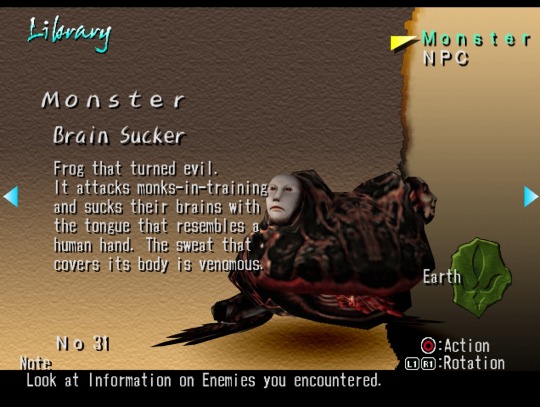





























SHADOW HEARTS (2001) - BESTIARY (2/5)
5 notes
·
View notes
Text
好きな漢字: 瓦 (kawara)
After writing about 鯱 in my first post, I decided I’d also write about 瓦 (pronounced kawara), although I have less to stay about the kanji itself and more about kawara as a part of Japanese history and culture.
Kawara are traditional Japanese roof tiles. Ceramic roof tiles were introduced to Japan from China and were revered for their durability, as they were weather-resistant and resistant to fire. Historically, they were made out of clay, although modern ones can be made from other materials.
This classic component of Japanese architecture may also use figures of shachihoko as ornamental roof tiles called 鯱瓦 (shachihokogawara). Another commonly seen ornamental roof tile is the 鬼瓦 (onigawara), which features figures of oni, an iconic Japanese yokai that can be roughly translated to “demon” or “ogre.”
Practically, they are useful for keeping rainwater from leaking through the roof, and religiously, they are believed to ward off evil spirits. They are often seen adoring Buddhist temples, such as the Tōdaiji, or Tōdai temple, in Nara Prefecture.
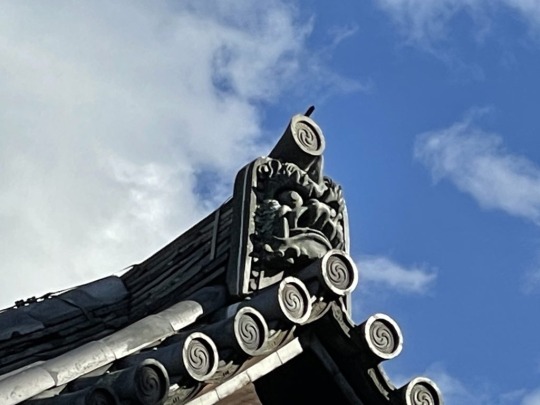
Photo taken from here: https://narashikanko.or.jp/naratime/plan/2023a0086-2
I’d be remissed if I didn’t also mention a semi-viral Japanese dish attributed to Shimonoseki in Yamaguchi Prefecture, 瓦��ば (kawara soba). It consists of soba noodles cooked with matcha and served on a Japanese roof tile. It’s really cool!
It is said that the dish was inspired by a legend that soldiers in the Satsuma army ate food off roof tiles while surrounding Kumamoto Castle during the Satsuma Rebellion in 1877. But the origin of the dish itself is the Kawara Onsen in Shimonoseki. Don’t you wanna try it?

Photo is from this webpage: https://yamaguchi-tourism.jp/feature/kawarasoba
I also used this page as a source for kawara soba!
#japan#japanese#language#langblr#studying#studyblr#japanese studyblr#japanese langblr#japanese food#japanese culture#history
13 notes
·
View notes
Text
My Hugo Award thoughts:
Best Novel: Nettle and Bone
this makes sense to me! It was my second choice (and my first choice, Nona the Ninth, is a controversial entry in controverial series) (controversial in that people tend to either love or hate them). I think I've made it clear that I think this year's Novel nominees were weak: while this was at the top of the nominees it is nowhere near the best sff novel of last year.
Best Novella: Where the Drowned Girls Go
this one confuses me. I very much like Seanan McGuire's Wayward Children series, but I don't think this was one of the best of that series, and it is heavily context dependent. It's a good novella! But the novella category was so strong this year that I don't know why it won. This was actually my lowest ranked novella. My first choice was Ogres, with Into the Riverlands as a close second.
Best Novelette: The Space-Time Painter
Confession time: I did not read this or include it in my rankings. There was no English translation provided, and I was running low on time and energy and didn't machine-translate it myself. Sorry. That said, I've heard good things about it elsewhere, and it is of course nice to have a work from the host country/language win. My vote was for Murder by Pixel, and in general I thought this was a good category.
Best Short Story: Rabbit Test
yeah this was always going to win. Excellent short story, well written and topical, it was my top vote. I'm interested to see how the voting metrics break down: this category was a mix of chinese and english entries, and I'm curious as to how that impacted results.
Best Series: Children of Time
YES! YESSSSS! This category was incredible this year, six well-deserving nominees, very hard for me to choose between them. But this was my top vote (a hard decision), and I'm delighted it won. Three hefty volumes of the best kind of drawn out philosophical science fiction, deeply moving, with incredible worldbuilding and alien minds. This was absolutely the highlight of works I read because they were nominated.
Best Related Work: Terry Pratchett: A Life With Footnotes
No surprise here, Terry Pratchett is beloved and this book was well written. This was in my top three, which I had a very hard time choosing between and all I would have been happy to see win. My own top vote ended up going to Chinese Science Fiction, an Oral History, which was also the only work I couldn't read, aside from the translated introduction and table of contents. I voted for it on the grounds that what was translated made an excellent case for it being an important work, not just a good one, digging into the history of science fiction in China in a way that had never been done before, and I felt that nonfiction about a specific person or movie, no matter how well-written or informative, couldn't compete with that scope.
Professional Artist: Enzhe Zhao and Fan Artist: Richard Man
this is fine! Neither was my top pick, but both were near the top, and I will freely admit I know little about art.
Lodestar (Not a Hugo): Akata Woman
Not my top pick, but a perfectly good winner. I suspect my ranking of it suffered from a) being in a reading slump that made me have to push to get through it and b) this being the conclusion of a trilogy I last read six years ago, and remember very little of. There were a lot of moments of resolving emotional conflicts that I had no context for, which left the book a little flat. My top vote was for The Golden Enclaves, which I think was by far the best nominee, but also dubiously qualified (while the books, especially the earlier ones, certainly feel like YA, and center around teenagers in a magical high school, they are published as adult fantasy). My runner up was Into the Serpent's Wake, the sequel to Tess of the Road, a book I am still bitter did not win in the first year of the Lodestars.
Astounding (Not a Hugo): Travis Baldree
... ok. I do not get the hype for Legends & Lattes, and by extension Travis Baldree. The book was delightful! But it was also fluff, not something that provoked any strong thought or emotion, not any great work of prose, not innovative or creative in any new way that would mark a rising new author. This was my lowest ranked nominee (leaving out Weimu Xin, whose work did not have an english translation). This would be less disappointing, given I found most of the nominees so-so, were it not for Isabel J. Kim, whose short stories were miles above any of the other nominees.
Other Awards:
I didn't vote in the other categories, or read/watch/listen to their nominees. Nothing in their results jumps out at me, though I'm happy EEAAO won.
15 notes
·
View notes
Text
According to folklore and mythology, humpbacked demons have been described as creatures with a round or hunched back. This physical characteristic can be found in various ethnicities and cultures around the world, with each having its own unique interpretation and explanation.
In some Asian cultures, humpbacked demons may be depicted as ogre-like creatures with a round or hunched back. This is often associated with their role as protectors of the dead or guardians of sacred places. In China, for example, the humpbacked demon known as Shou Xing is believed to bring good fortune and longevity to those who encounter it.
In Hindu mythology, humpbacked demons are known as rakshasas and are depicted as malevolent spirits with a hunched back. They are often portrayed as shape-shifters who can take on human or animal form. In some stories, the hump is believed to contain great powers, making these demons even more formidable.
In Native American folklore, humpbacked demons are often described as tricksters or shape-shifters who use their hump to store magical or supernatural objects. According to some legends, this hump may serve as a shield against harm or a source of great strength.
In European folklore, humpbacked demons are often associated with witchcraft and are believed to have a pact with the devil. The hump on their back is seen as a physical manifestation of this pact, giving them enhanced powers and abilities.
Overall, the humped back of demons is seen as a symbol of their supernatural nature and their connection to the spiritual world. It is also often associated with their role as protectors or keepers of knowledge and secrets. The specific meaning and symbolism of this physical characteristic may vary among different cultures and belief systems, but it remains a prominent feature in many depictions of demons.
2 notes
·
View notes
Text
The 2023 Hugo Awards will be presented at the Chengdu Worldcon on 21st October. The finalists have recently been announced and we’re thrilled to see Conversation 2023 Guests of Honour, committee members and programme participants in many categories!
Best Novel - Guest of Honour Ursula Vernon (writing as T. Kingfisher) is nominated for Nettle & Bone.
Best Novella - TWO of our Guests of Honour are nominated! Adrian Tchaikovsky for Ogres and Ursula Vernon (again writing as T. Kingfisher) for What Moves the Dead.
Best Series - Adrian Tchaikovsky is nominated for the Children of Time Series
Best Editor, Short Form - Remote programme participant Oghenechovwe Donald Ekpeki is nominated
Best Fancast - Octothorpe, by John Coxon, Alison Scott and Liz Batty is nominated. Octothorpe 81 was recorded live at Conversation 2023 and as you probably already know, Alison was our head of comms.
Best Fan Artist - nominations for España Sheriff (who was in the Conversation 2023 Art Show) and for Alison Scott. Congratulations to all and the best of luck!
2 notes
·
View notes
Text
@tenkoseiensei said (inbox):
what's with this guy? there's plenty yan qing doesn't understand in the dizzying moment. one he's still catching up with; between manifesting a 'servant,' madam jia and li gu being thrown out, and his body replacing them in inhabiting the master's estate- though still in tattered rags. it's something like a miracle: no, he's sure that it is one, enough that the sense of himself floating on air worried him that he might have finally died, or was hallucinating on the brink of it. at least it was a beautiful, stunning vision: so much burning, blessed red, and a ferocious figure that could intimidate anyone, like a deity of right and war. anxiously, yan qing peeks out a window- looking through orchards, then the busier streets. ' you just ... kicked them out? ' sent them packing, scurrying off? and for him? ' b-but ... they already wasted so much just to make sure that everyone hated me. oi, you know you've practically made an enemy out of yourself in the face of this whole city, right? ' terror, a jade-eyed tremble. ' are you going to get rid of me and take the house for yourself? is that it? ' what other reason was there, brought along despite being an absolute stranger?

NAGAYOSHI DIDN’T REALLY UNDERSTAND the situation at hand when he was summoned, but none of that really mattered. It never did when he was involved. Threats to his boss were to be eliminated. It was just that simple to him in his Berserker Madness. However, his current Master had been less keen on him being quick to enact violence on those who had thought themselves above the other. There was no blood splatter upon walls. No entrails left upon carpet staining it a bright and terrible red… No, no, such violence was not allowed from him, and thus, he did the next best thing – merely kicked everyone out of the residence. One look upon that giant of a man with eyes as wild as any ogre and that was enough to make most turn tail and run even without him having to do much of anything. ❝Heh, as if I’m scared of some weaklings. Anyone who points a weapon at me is going to get sliced down the middle!❞ Such words were said proudly, but there was truth to them. Nagayoshi would kill without hesitation. All one had to do was give him a reason to do so and it would be done.
Eh…but his Master seemed against any potential murders, and so…he supposed a little maiming here and there wouldn’t be going against their wishes, right? A sliced off hand, a couple fingers missing, part of an ear gone--- That was being ‘good’, wasn’t it? No one would be dead in that case. Stretching his arms a bit, he leaned against a nearby wall, arms crossed around his chest and eyes taking in the residence around him. So, this was what China looked like, huh? He had always wanted to see it, though that was never to be. Even if he hadn’t died young, the fact remained that he would have been in Japan until the day he grew old and unable to hold a blade in his hand. The only way he would be able to ‘see’ this land would be through scrolls with vast, breathtaking images. Those thoughts faded soon after as he listened to his Master’s words, gaze now quick to shift back to them.
❝Didn’t you want to go home? I gave it back to you. ‘Sides, Master, I’ll never be your enemy, nor will I ever betray you.❞ For as long as they didn’t betray him, he would be no different from the most loyal of hounds. ❝Tell me who to kill and I’ll kill them. Tell me what your aspirations are and I’ll make them a reality. Nothing and no one will get in your way because I’ll cut them all down and clear the way.❞ They didn’t have to bloody their hands or anything of that nature. Nagayoshi would do that and more for them.
3 notes
·
View notes